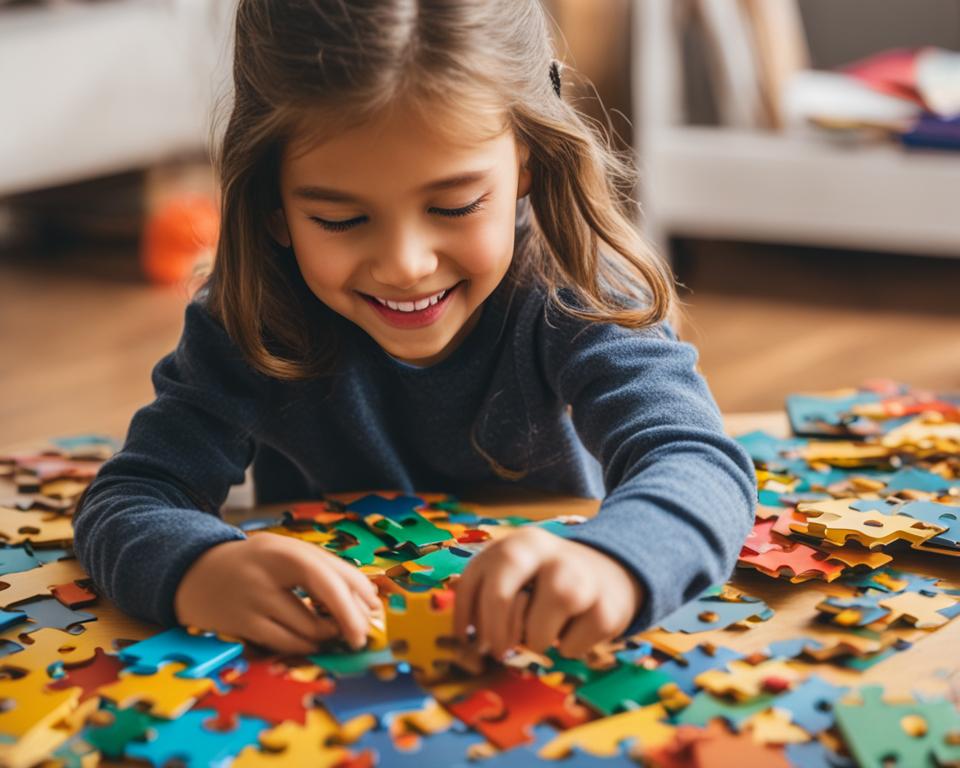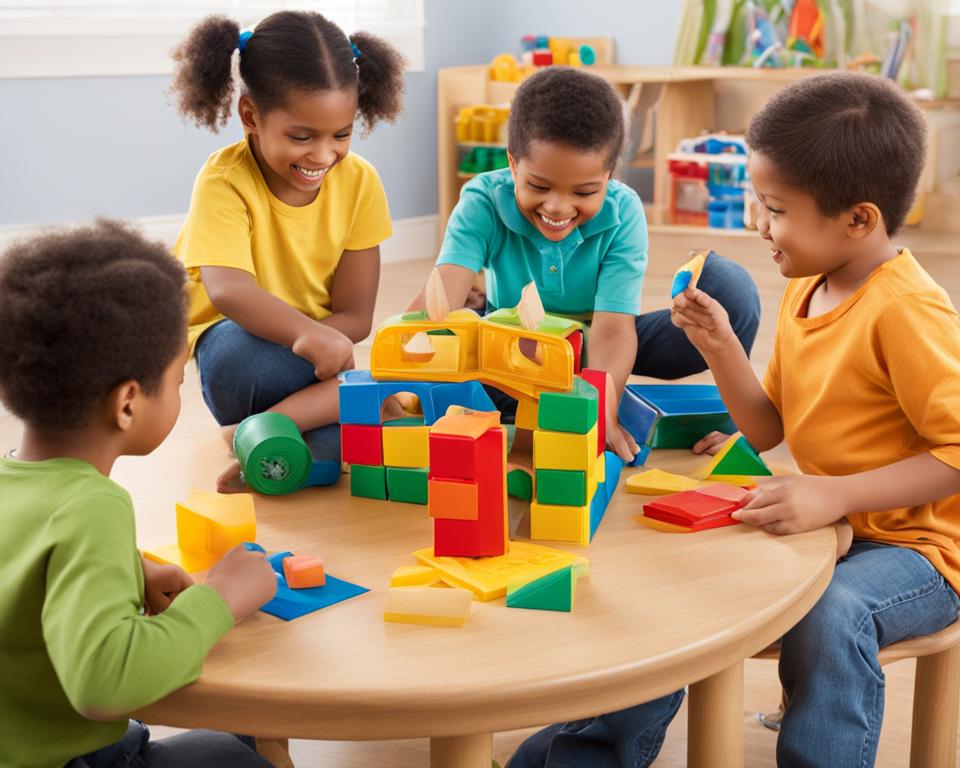It's crucial to know that students with autism and ADHD need special study strategies. Autism…

Hopeful Signs Your Autistic Child Will Talk Soon
For many parents, witnessing the first words of their child is a monumental milestone. However, for those with children on the Autism Spectrum Disorder (ASD), the journey to verbal communication may look different.
Understanding and recognizing the signs your autistic child will talk, and monitoring their speech development in autistic children becomes not just hopeful, but instrumental.
Key communication signs in autistic children include their ability to engage with visual aids and show interest in interactive play. These are the stepping stones that may indicate that verbal communication in autism is progressing. Although children’s milestones for speech in autism can vary widely, early identification and support are critical to foster language growth and enhance communication skills.
In our upcoming article, we delve into the diverse ways through which speech can emerge, all the while providing hope and guidance to parents and caregivers who are eagerly awaiting those cherished words from their child.
Recognizing Early Communication Signs in Autism
Parents and caregivers can look for the early signs of language development in autism, which are pivotal indicators of a child’s progress towards speaking. Identifying these signals of nonverbal autism communication can offer hope and direction for promoting speech in autism.
Nonverbal Communication Milestones
Before words come into play, children with autism often express their intent through nonverbal means. Recognizing these milestones is crucial:
- Use of body language, such as pointing or leading an adult by the hand to express a need
- Imitation of sounds, facial expressions, or physical gestures
- Initiation of joint attention, showing things they find interesting
These actions demonstrate a child’s willingness to engage with others and form the foundation for future verbal communication.
Understanding Echolalia as a Potential Precursor to Speech
Echolalia, the repetition of words or phrases, can act as a vital stepping-stone on the path to speech. It often represents:
- The child’s attempt to communicate within their current abilities
- A method for practicing the rhythm and intonation of speech
- An emerging understanding of language functional use
As children with autism start to filter, process, and understand these echoed sounds, they can begin to use them purposefully to communicate.
Role of Eye Contact and Responsive Gestures
Subtle yet significant gestures like eye contact and the ability to respond can signal readiness to communicate:
- Notable improvements, even slight, in making and maintaining eye contact
- Responsive gestures or facial expressions in reaction to social cues
- Following simple commands or responding when their name is called
These actions suggest a growing awareness and responsiveness to the social world.
Interactive and social play is another important sign to observe. When a child with autism shows interest in play, especially involving others, it indicates they are preparing for richer forms of communication.
Signs Your Autistic Child Will Talk
As a parent, monitoring the communication signs in autistic children can provide hope and a direction for helping your child develop their speech. There are certain behaviors and responses to watch for that signify your child may soon find their voice.
Observing Vocalization Attempts:
- Mimicking sounds or words, indicative of early stages in speech development.
- Grunt-like sounds or diverse vocalizations can signal future verbal communication.
- Spontaneous babbling or using expressive noises that show an effort to communicate.
Responsiveness to Social Interaction:
- Turning heads or shifting attention when their name is called, implying they recognize and understand personal identifiers.
- Following simple commands or gestures that suggest comprehension and readiness to communicate.
- Engaging with others through play and showing interest in social activities.
Using Gestures to Express Needs:
- Pointing to objects or actions they desire, showcasing an understanding of symbol to concept.
- Gestures coupled with vocal sounds or attempts at words, marking a blend of nonverbal and verbal communication efforts.
- Bringing objects to caregivers as a way to request assistance or express interest.
As you identify these signs your autistic child will talk, consider encouraging their attempts and creating abundant communication opportunities. Parents wondering, “When will an autistic child start talking?” can take solace in these signals. It’s through patient support, creating an engaging and communicative environment, and practicing anticipation-building exercises that children can transition from nonverbal to verbal communication.

Remember, each child is unique, and their journey to find their voice is personal and distinctive. Celebrating every sound and response is crucial in nurturing their progress toward speech.
Enhancing Speech Development in Autistic Children
For the countless families navigating the journey of autism, empowering their children in the realm of communication is often a key objective. Speech therapy for autistic children is not just a clinical practice; it’s a beacon of hope for enhancing connections through language. Early intervention plays a crucial role in this developmental path, offering invaluable tools and methodologies for promoting speech in autism. In this exploration of fostering speech development in autistic children, we reveal how targeted strategies and everyday interactions can yield substantial strides in a child’s communicative abilities.

Importance of Speech Therapy and Early Intervention
Embarking on speech therapy at an early stage can ignite the vast potential within a child. Experienced speech-language pathologists (SLPs) are at the forefront of crafting personalized approaches that resonate with each child’s specific needs and learning styles. Through early intervention, these professionals can detect subtle nuances in communication readiness and scaffold the development of speech accordingly.
Interactive Language Games and AAC Devices
- Utilizing technology, such as Augmentative and Alternative Communication (AAC) devices, provides alternative avenues for children who face challenges with traditional speech.
- Engaging and educational apps can introduce vivid visuals and exciting gameplay elements to weave in foundational vocabulary and language concepts.
- Language games, both physical and digital, offer immersive and playful experiences that naturally elicit verbal expression.
Encouraging Daily Communication Practices
Each day brings a myriad of opportunities to promote speech development. Simple yet effective daily practices are instrumental in establishing a rhythm of communication that autistic children can grasp and participate in with growing confidence.
- Cause-and-effect toys invite children to understand the power of their interactions, spurring them to vocalize reactions and anticipations.
- The whimsical act of blowing and popping bubbles can coax out those precious ‘pop’ and ‘more’ cues, marrying fun with the fundamentals of speech.
- Finger puppets serve as charismatic companions, guiding children through storytelling scenarios that encourage dialogue.
Whether an SLP is leading a structured session or a parent is integrating speech-building games at home, it’s the harmony of these efforts that nurtures speech development in autistic children. By both following the child’s unique cues and gently expanding their comfort zones, a symphony of new words and expressions can emerge over time.
Conclusion
The journey towards speech development in autistic children can often be intricate, filled with dedicated observation and fostering positive interactions. As each child with autism presents unique communication pathways, acknowledging early signs of language development in autism is a transformative step towards guiding them to find their voice. By creating an environment ripe with visual aids, engaging games, and responsive dialogue, caregivers elevate the fundamental aspects of promoting speech in autism.
It is through a nurturing blend of encouragement, therapy, and practical, everyday activities that key advancements are achieved. The scaffold of success is built from recognizing and reacting to diverse communication cues, which could range from a child’s gestural attempts at expression to the semblance of word formation. These moments, no matter how small they might be perceived, are milestones that echo progress.
Parents and professionals alike play a pivotal role in guiding autistic children towards unlocking their communicative potential. By customizing approaches to fit each child’s distinct learning style and reinforcing efforts with unwavering support, the pathway to effective communication becomes increasingly attainable. As we honor these steps towards promoting speech in autism, it’s essential we remember that every gesture, every uttered sound, and every shared glance is a stride forward in the world of language and expression for those with autism.
FAQs
What are some hopeful signs that my autistic child will talk soon?
Some signs that indicate your autistic child may begin speaking soon include babbling, mimicry of sounds, responsive interactions such as gestures or eye contact, and use of nonverbal communication that suggests an intent to communicate, like pointing or leading you to what they want.
What milestones should I observe for speech development in my autistic child?
Early speech milestones for children with autism can include making different vocal sounds, imitating speech sounds or words, maintaining some eye contact, responding to their name, and following simple commands. These milestones can occur at various times for each child, so continuous observation is key.
How do I recognize early communication signs in autism?
Early communication signs include nonverbal communication such as gestures, making eye contact, and imitating sounds or actions. Also, look for your child’s responsiveness to social interactions and their use of echolalia, which can be a meaningful step towards developing speech.
What role does nonverbal communication play in autism speech development?
Nonverbal communication plays a significant role in speech development for children with autism. It includes body language, facial expressions, and gestures, which all indicate the child’s intent to communicate and can be foundational for the development of verbal skills.
Can echolalia be considered a positive sign of language development?
Yes, echolalia, or the repetition of words and phrases, can be a positive sign of language development in children with autism. It often indicates that the child is trying to learn and use language, and it can serve as a building block for more complex speech and communication.
How should I interpret my autistic child’s eye contact and responsive gestures?
Eye contact and responsive gestures can be interpreted as your child’s increasing awareness of and engagement with their social environment. It can signal their readiness to communicate and may precede developments in verbal communication.
When will my autistic child start talking?
The timeline for when an autistic child will start talking varies greatly among individuals. It is influenced by many factors including genetics, intervention, and the unique personality of the child. Some may start speaking in early childhood, while others may develop language skills later. Continuous support and intervention are crucial.
How important is speech therapy and early intervention for autistic children?
Speech therapy and early intervention are critical for the development of communication skills in autistic children. These services provide personalized strategies, support, and resources that can make a significant difference in the child’s speech and language development.
Are interactive language games and AAC devices helpful for children with autism?
Yes, interactive language games and Augmentative and Alternative Communication (AAC) devices can be extremely helpful for children with autism. They provide engaging ways to learn and practice communication skills, expand vocabulary, and express needs or thoughts effectively.
What are some daily communication practices I can do to encourage speech in my autistic child?
Daily practices that can encourage speech include interactive play, using cause-and-effect toys, encouraging imitation of sounds or words, and participating in routine-based conversations. You can also use visual aids, such as picture cards, and regularly engage your child in social games to stimulate language use and development.



This Post Has 0 Comments